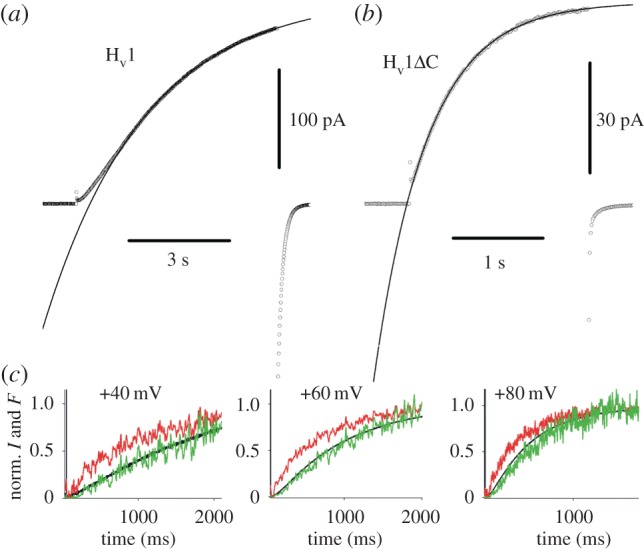Figure 2.

Cooperative gating of HV1. The HV1 dimer behaves as expected of a classical Hodgkin–Huxley n2 system. The WT channel in most species is a dimer in which both protomers must undergo a conformational change before either conducts. This manifests as sigmoidal activation kinetics in hHV1 (a). Truncation of the C terminus eliminates coiled-coil interaction and results in each monomer apparently functioning independently. In monomeric constructs (b), activation is exponential and is five to seven times faster than in the dimer [52,83,84]. Lines show single exponential fits; both currents were recorded at +50 mV at a symmetrical pH of 7.5. In (c), the red trace is the fluorescence signal from a tag attached to S4 in dimeric CiHV1, showing the exponential time course of its movement. The black trace shows the current, with its sigmoid turn-on. The green trace is the square of the red fluorescence signal, matching the current in the classical Hodgkin–Huxley manner, in which both protomers must activate before current is observed. (a,b) Reprinted with permission from Musset et al. [83] (Copyright © 2010 The Physiological Society) and (c) Reprinted with permission from Gonzalez et al. [85] (Copyright © 2010 Nature Publishing Group).
